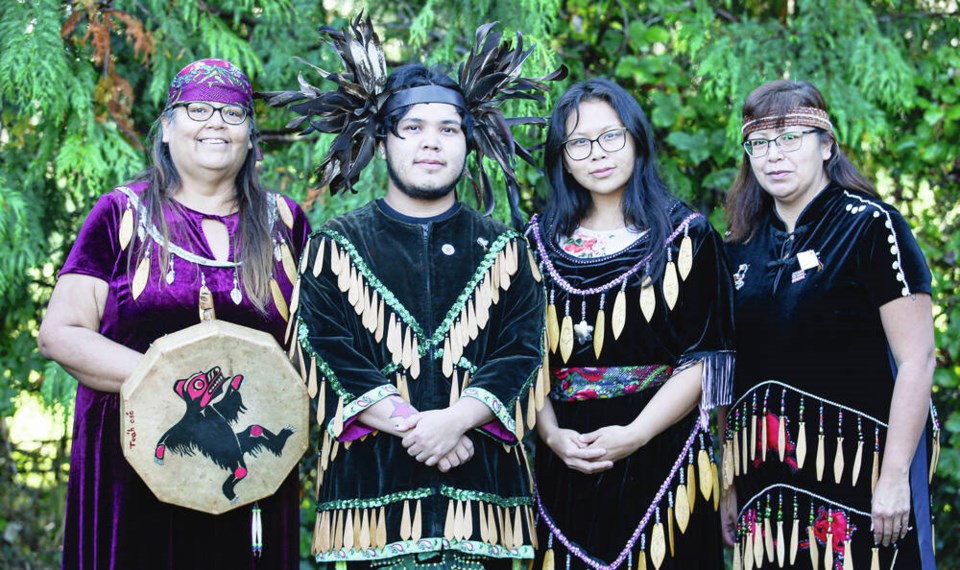When the Lekwungen Traditional Dancers perform, they feel their ancestors singing along with them.
“We just feel them here singing with us — Momma’s siblings, and her parents, all of our late ancestors singing with us too,” said Christine Sam. “We know we never sing alone.”
Members say dancing with their family — everyone in the group is related through blood or marriage and mostly from the Songhees Nation — helps them feel connected to their culture and relatives. And that connection to culture and each other has profound effects for many.
“Some of the kids came out of their shell,” said 81-year-old Bernadette Dick, the “backbone” of the group, better known as Momma. “They went dry. They gave up drinking.”
The group has been around since the late 1970s and has members as young as three. They have performed at schools, festivals, parades, tourism events, private functions, events for all levels of government, and for royalty. They have two performances today to mark the first National Day for Truth and Reconciliation. They perform songs that were given to them by relatives and some that they created themselves.
Their usual set starts with their Running In song to introduce themselves as Lekwungen people in the Hul’qumi’num language from Cowichan. They use Hul’qumi’num, because their language, Lekwungen, is only recently being revived. That’s followed by their Paddle Welcome song, used traditionally to show other tribes they’re approaching with peace, and their Prayer Song, an opportunity to offer thoughts to someone in need.
The sound of beating drums and the jingling of small wooden paddles affixed to their regalia mixes with the women’s voices throughout their performances.
The dancers have been embraced in recent years by many interested in honouring the people on whose traditional lands Victoria sits, with a busy summer schedule to prove it.
“It was like more people started to recognize us and recognize the territory,” said Beth Dick, who has been dancing with the group since its beginning in 1978, when she was a child.
Lyla Dick, also an original member, said she has felt the shift and is grateful for the acceptance of their culture. Memories of people who refused to accept them still stick with her — “Being kind of shunned in the earlier days is hard to shake,” she said — but she focuses on her pride that their songs and dances are still alive.
“They didn’t kill all of us, all the Indian in us. And the fact that we’re able to carry this on, just goes to show the strength of our ancestors,” she said.
Eugene Sam, 22, said while it once felt like nobody was interested in their culture, now many are invested in learning more and watching their performances. “Trying to take in that little bit of who we are as Native American people, and it’s really nice to know everyone’s interested now,” he said.
The original members of the group are looking to the younger generation to ensure the songs live on. Christine Sam’s three-year-old son, Skye, the youngest in the group, already has his own small drum, and sings and dances on the side during performances. They’re waiting for the day he decides to run onto the floor and join the group.
“This has to be carried on,” Momma says.



